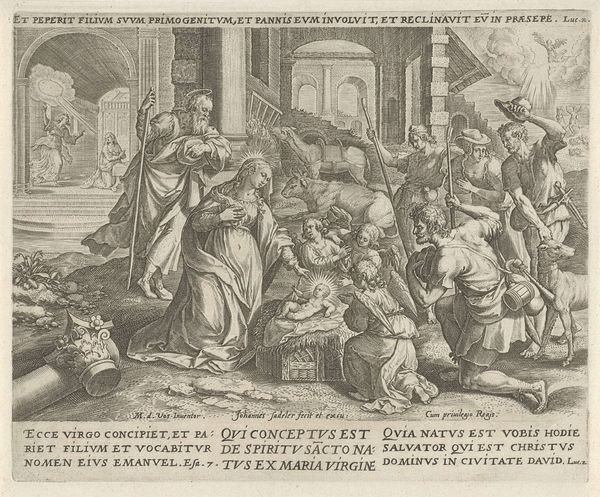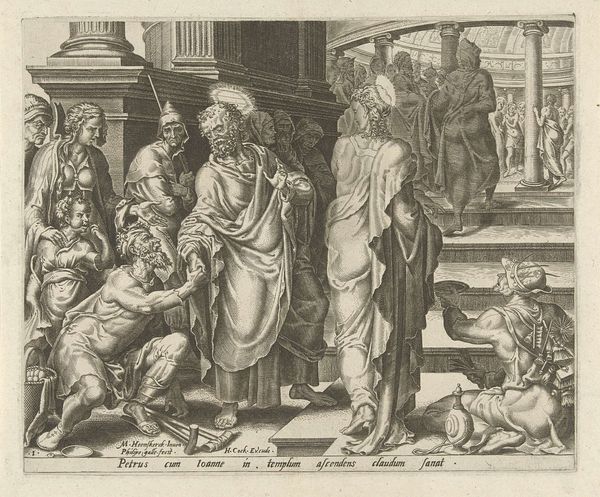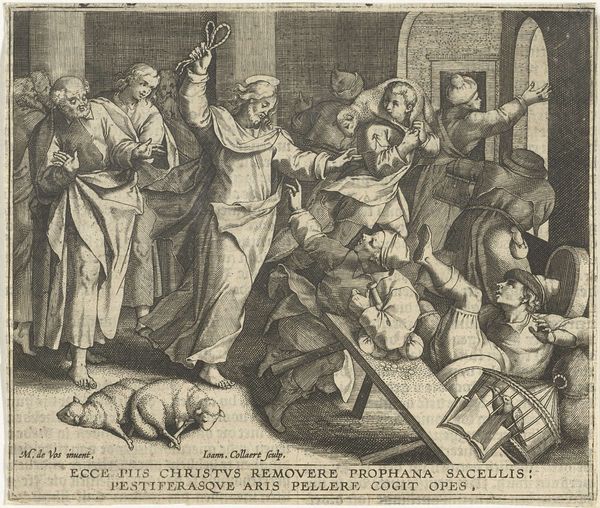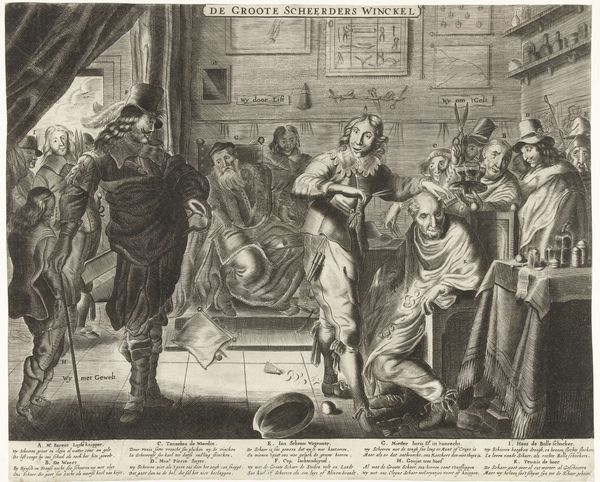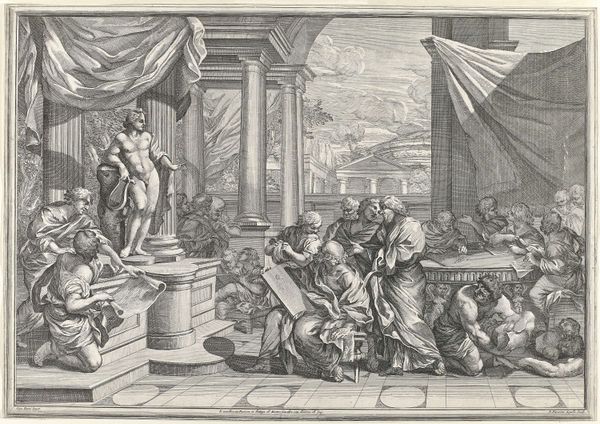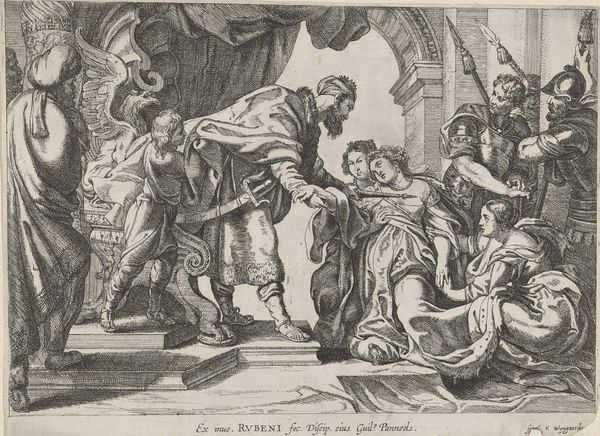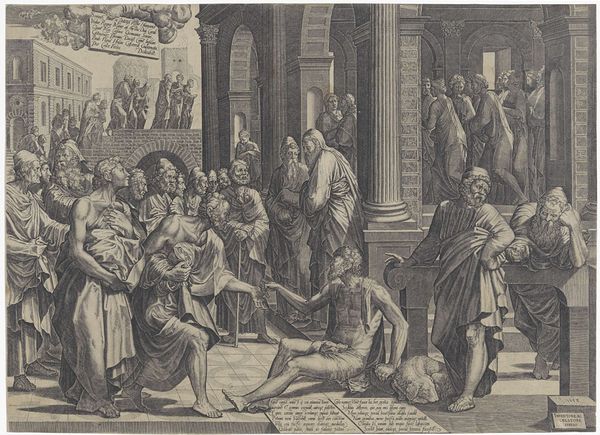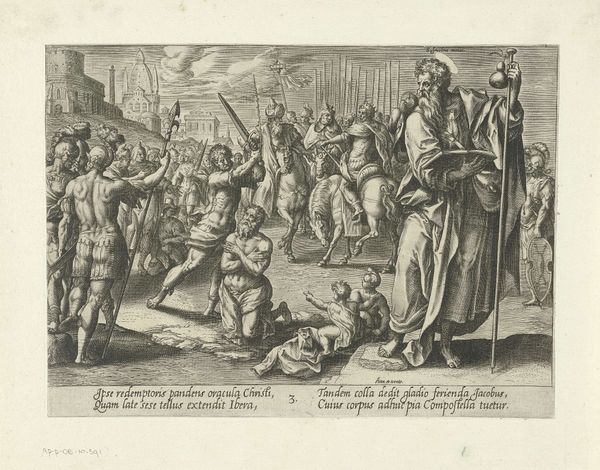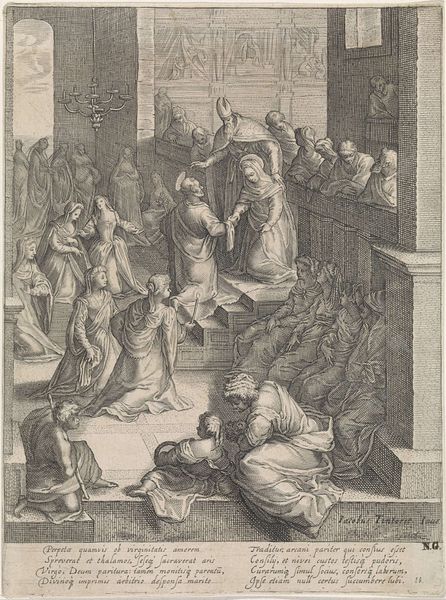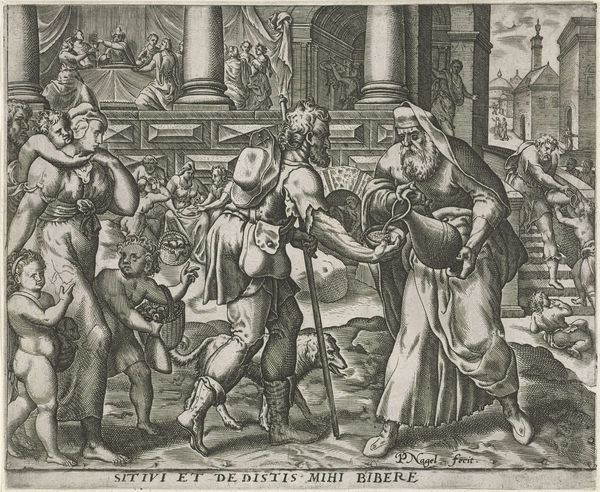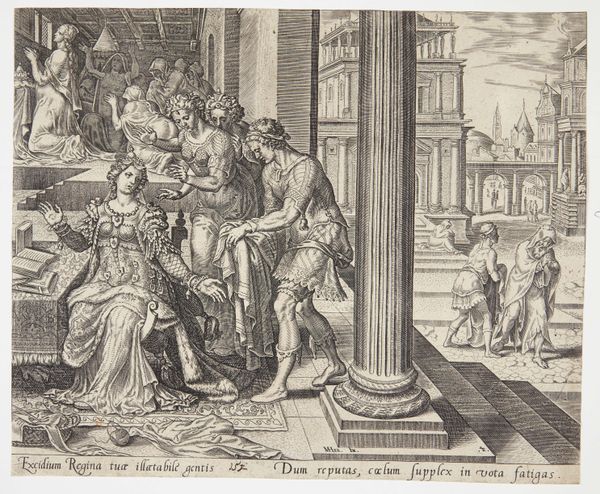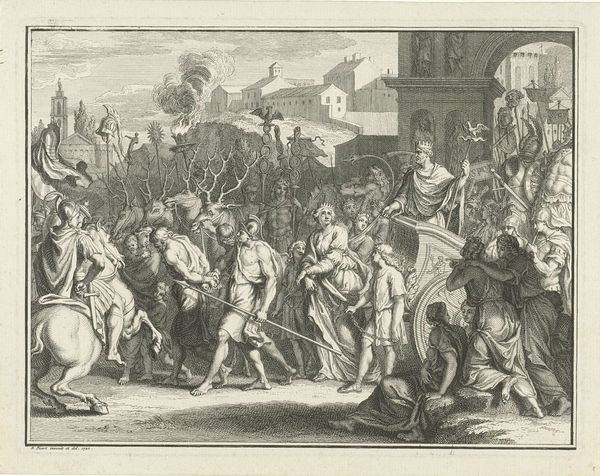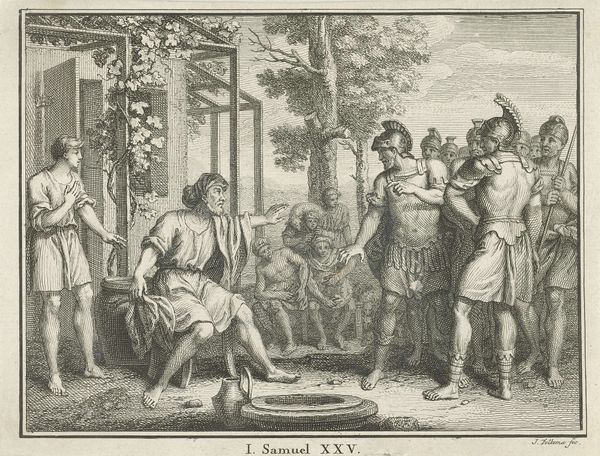
print, engraving
#
narrative-art
# print
#
old engraving style
#
figuration
#
pencil drawing
#
genre-painting
#
history-painting
#
northern-renaissance
#
engraving
Dimensions: height 125 mm, width 150 mm
Copyright: Rijks Museum: Open Domain
Curator: This is Jan Collaert II's "Gelijkenis van de koninklijke bruiloft," an engraving from 1597 currently housed in the Rijksmuseum. What strikes you about it? Editor: It feels incredibly dramatic. You've got this crowded banquet scene contrasted with the violent expulsion of a single figure. What story do you think Collaert is trying to tell here? Curator: I see this piece as deeply rooted in the power dynamics of the time. Notice the king, isolated and giving orders. It points to the ways in which societal structures exclude and punish those who don’t conform, even at a celebration, right? Editor: Absolutely, that's clear in the body language. Is that person being thrown out simply for not wearing the right clothes? It feels very classist. Curator: Precisely! The wedding garment becomes a symbol of belonging, and its absence signifies rejection. Considering the socio-economic climate of the late 16th century, what do you think Collaert might be critiquing? Perhaps a rising merchant class challenging old aristocratic structures? Editor: So it's not just about manners, but a statement about social mobility and who gets to participate in the "wedding," or society, so to speak. What about the medium? Does the fact that it is a print speak to its function in society? Curator: Good question. As a reproducible medium, prints democratized images, circulating them more widely. Collaert's choice ensured his critique reached a broader audience, sparking dialogue – or perhaps controversy – about these power structures. Editor: That makes the message all the more potent. Seeing it now, centuries later, that feeling of exclusion still resonates. It gives you a lot to think about. Curator: It certainly does, which I feel demonstrates the continued relevance of art historical and theoretical exploration into themes of exclusion and social critique.
Comments
No comments
Be the first to comment and join the conversation on the ultimate creative platform.
